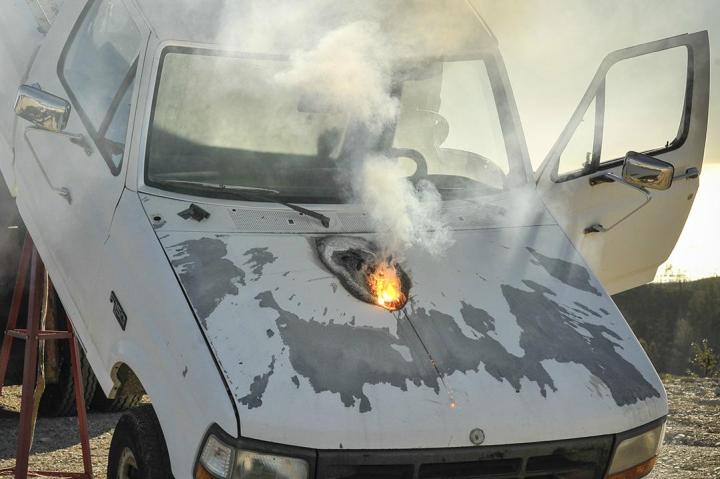
The prototype 30-kilowatt fiber laser used in the field test, called ATHENA (Advanced Test High Energy Asset), burned through the running engine of a small truck in a matter of seconds, according to Lockheed Martin’s press release.
“Fiber-optic lasers are revolutionizing directed energy systems,” said Keoki Jackson, Lockheed Martin chief technology officer. “We are investing in every component of the system – from the optics and beam control to the laser itself – to drive size, weight and power efficiencies. This test represents the next step to providing lightweight and rugged laser weapon systems for military aircraft, helicopters, ships and trucks.”
Lockheed Martin’s demonstration marked the first field test of an “integrated 30-kilowatt, single-mode fiber laser weapon system prototype,” which combines multiple fiber laser modules into a single beam in a technique known as spectral beam combining.
ATHENA is an advancement of the company’s ADAM (Area Defense Anti-Munitions) laser weapon system, which successfully disabled two boats about a mile away in tests last May. In those tests, it took less than 30 seconds for the ADAM laser system to burn through the rubber hull of military-grade boats in the Pacific Ocean.


